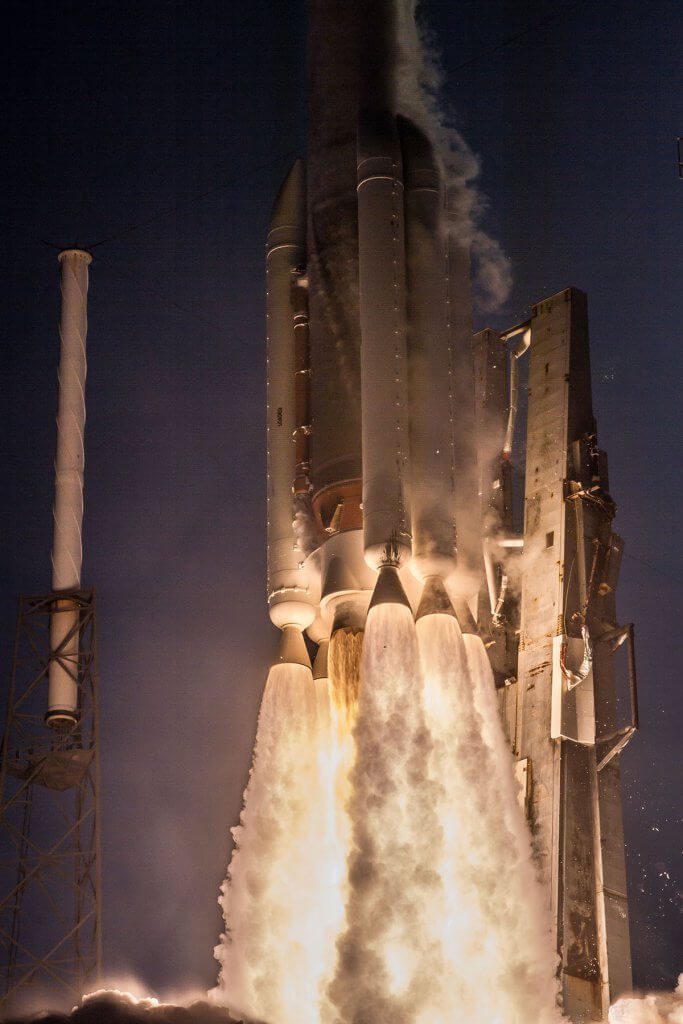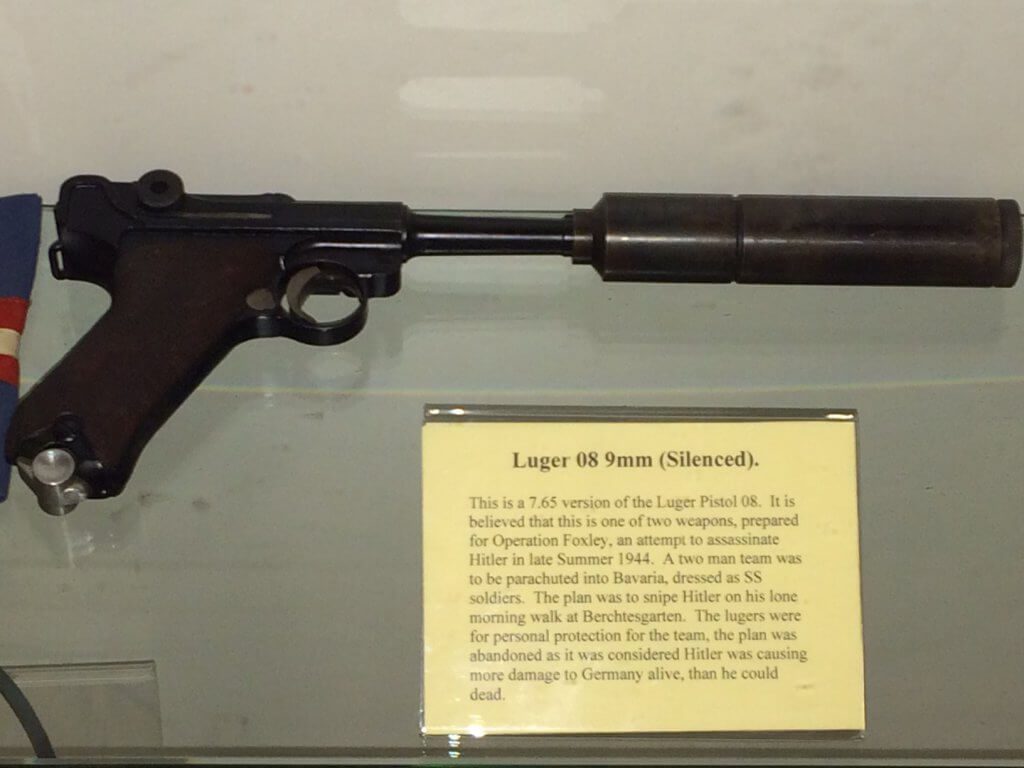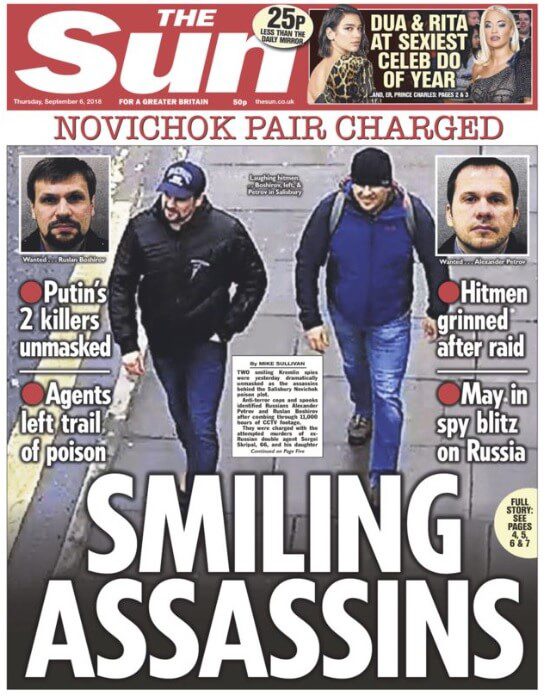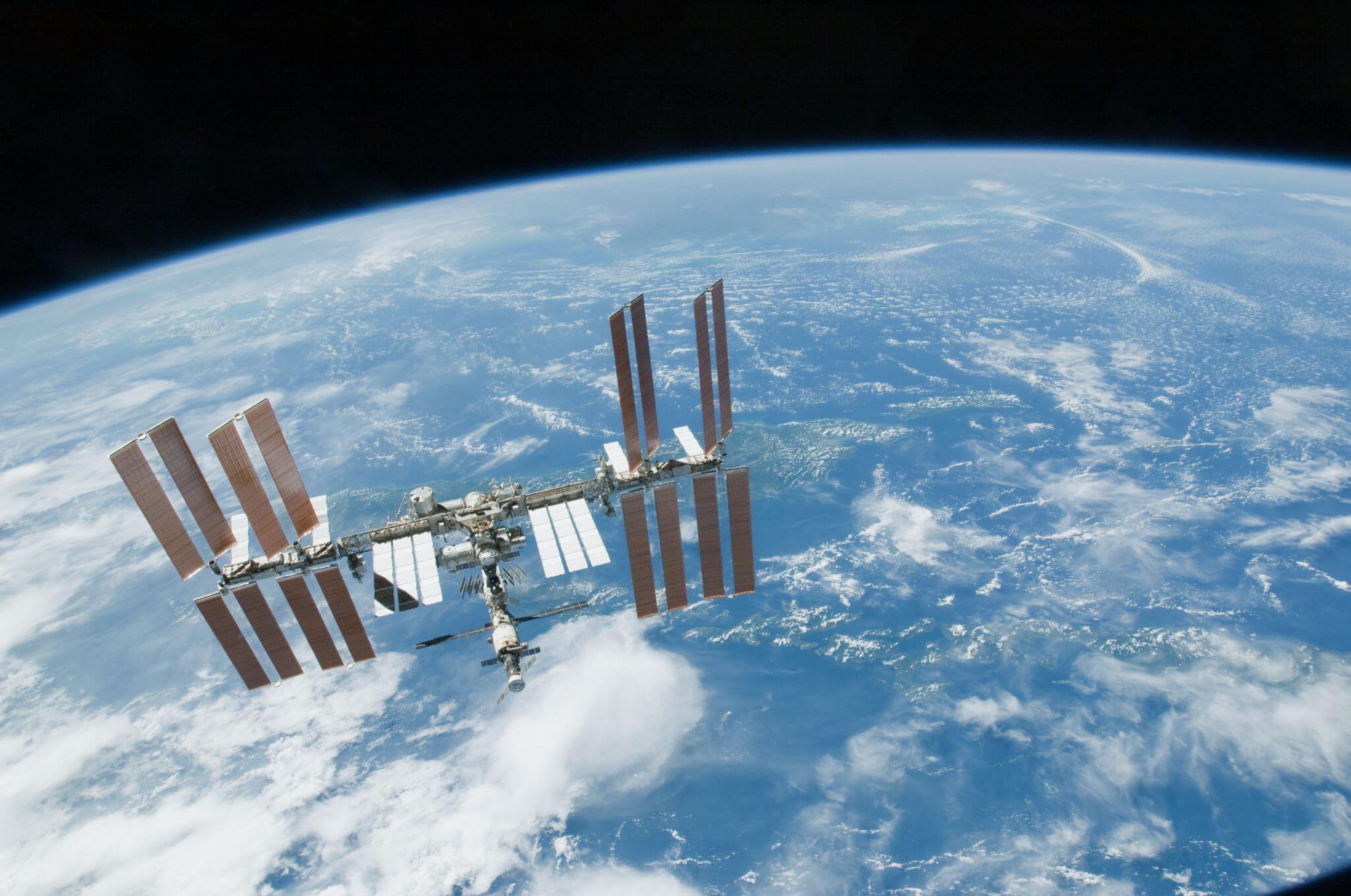Still smarting over world reaction to the nerve agent poison assassination attempt on Russian double agent/traitor Sergei Skripal and his daughter (an attack which also killed an innocent bystander in Salisbury, England, who accidentally came into contact with the poison) Russia has angrily reacted to the US Government’s belated decision to impose very serious punitive economic sanctions on the nation. Sergey Ryabukhin, head of the budget committee of the Russian upper house of parliament, has subsequently threatened to stop supplies of the Russian-built RD-180 rocket engine which is used by the United Launch Alliance (ULA) Atlas V rocket. Along with the Delta IV Heavy, the Atlas V is one of the workhorse launch vehicles used to launch various satellites for the US Government and the US Department of Defence.

The ULA Atlas V 551 blasts off using its five solid rocket boosters and Russian built RD-180 engine on mission AFSPC-11. Courtesy: ULA
Comment by David Todd: While a retaliatory suspension of supply of Russian rocket engines would be pretty devastating for ULA in the short-to-medium term, ULA does hold a stock of RD-180 engines which would allow it to operate for perhaps a year or so. However the USA is not as beholden to Russian engine supply as it once was, and has plans to be even less so. ULA, with government support, actively plans to eventually replace this engine with a US-built type, even if this is three or four years down the line. In the nearer term, standing in the wings is SpaceX which builds its own rocket engines for its Falcon 9 and Falcon Heavy internally. Likewise ULA’s Delta IV Heavy uses the US-built RS-68. These rockets could handle most of the payloads that the US Department of Defence would want to fly. There would be schedule difficulties – SpaceX has a famously bulging backlog of orders to satisfy – but it could be done. As it is, friendly European launch providers such as Arianespace would be glad to step in if required.
Of course, the agencies of the Putin-led Russian government may really be innocent in these matters – yes, there are some doubts – especially over the very public nature of these assassination attempts (see below). However, given that so many Russian dissenters, double agents and journalists have either been murdered, or have died in suspicious circumstances over the past decade or so, the benefit of the doubt is not really running for them. Hence, why the US financial sanctions are being imposed.
One final thing: Moral considerations aside (the killing of human beings is nearly always wrong), poisoning – especially using an easily traceable nerve agent such as Novichok (in the Skripal case) – or using a rare nuclear poison such as Polonium 210 (a Russian Lunakhod rover nuclear heater isotope used to murder of former FSB agent Alexander Litvinenko) – seems a bizarrely complicated, controversial and public way for Russia to kill its opponents and dissenters. Surely a sniper rifle – or even better – a silenced pistol – would have been a simpler, stealthier and less publicity-generating method of murder? And one with less risk to innocent bystanders. It is not for nothing that those masters in the art of assassination, the Kidon branch of the Israeli spy agency Mossad, often use silenced pistols as their preferred killing method. Then again, some have suggested that the perpetrators in some of the murders and attempted murders of Russia’s opponents want to court publicity as a warning to others.

Luger pistol with silencer (suppressor) attached. This pistol was to have been used as a back up/egress weapon for the never enacted Operation Foxley sniper rifle plan to assassinate Hitler during World War II. Courtesy: MarkFelton.co.uk
Update on 5 September 2018: Via the use of CCTV imagery and other methods, two Russian suspects in the Skripal attempted murder and the manslaughter of an innocent civilian, were tracked from Gatwick Airport, where they arrived, to a London hotel overnight, and then by rail for two very short visits to Salisbury, and then to Heathrow Airport from where they left the country for Russia. The first visit to Salisbury was allegedy for reconnaissance, but on the second trip the pair are alleged to have applied the Novichok poison to the front door of Sergei Skripal’s house using a Nina Ricci perfume bottle which apparently carried enough Novichok to kill thousands.
The suspects have been named as Alexander Petrov and Ruslan Boshirov and a European warrant has been issued for their arrest although Russia is unlikely to offer them up for trial. While their names are believed to be aliases, the suspects have been identified by UK police and intelligence sources as being agents in the Russian military intelligence service, the GRU. UK Prime Minister Theresa May noted that the assassination operation was unlikely to have been a “rogue” one as the GRU is part of the military command structure reporting to the highest echelons of the Russian government in the Kremlin. In other words it was either done under Russian President Vladimir Putin’s command, or done in his name. The UK government is now considering how to retaliate, for this attempt, and for the alleged state-sponsored murder of Alexander Litvinenko on British soil.
Update on 14 September 2018: The two accused Russians have appeared on Russian State TV to deny their involvement in the attempted assassination of the Skripals, noting (unconvincingly) that they were visiting Salisbury to see its famous cathedral, listing out its not-so-famous features as they did so. Regrettably, the suspects were not asked about the features of any other British cathedrals that they would like to visit.
Update on 27 September 2018: The suspect named Ruslan Boshirov has been actually identified as Colonel Anatoliy Chepiga of the GRU who received the “Hero of the Russian Federation” medal in 2014 for his military service in Chechnya and Ukraine.
Comment by David Todd: Labour opposition leader Jeremy Corbyn has been strongly criticised for showing weakness over Russian aggression as he refused to be a party to any retaliatory action taken against it. In doing so, Jeremy Corbyn appears to be a naïve pacifist at best, and a surrender-prone appeaser at worst.
While Jeremy Corbyn has (thankfully) steered the Labour party back towards Socialism after its ill-judged lurch rightwards in the Blair era, and had success in holding the UK Conservative government to account over its disorganised Brexit policies and over its lack of social and financial fairness – especially towards the younger generation, nevertheless Labour is unlikely to achieve power with Jeremy Corbyn in charge. This is despite a perceived sea-change leftwards in public opinion which should have made the Labour Party a shoe-in for the next General Election.
Jeremy Corbyn’s refusal to confront an aggressive Russia, his alleged anti-Semitism and his overly-friendly attitude to terrorists – past and present, and Corbyn’s Cultural Revolution-like purge of his opponents inside the Labour Party (a very hypocritical act given his own rebellious past), are all factors likely to end his hopes of becoming Prime Minister of the United Kingdom.

Despite sub judice-laws, the suspects have been dubbed “the Smiling Assassins” by the popular press. Image courtesy: The Sun via BBC






